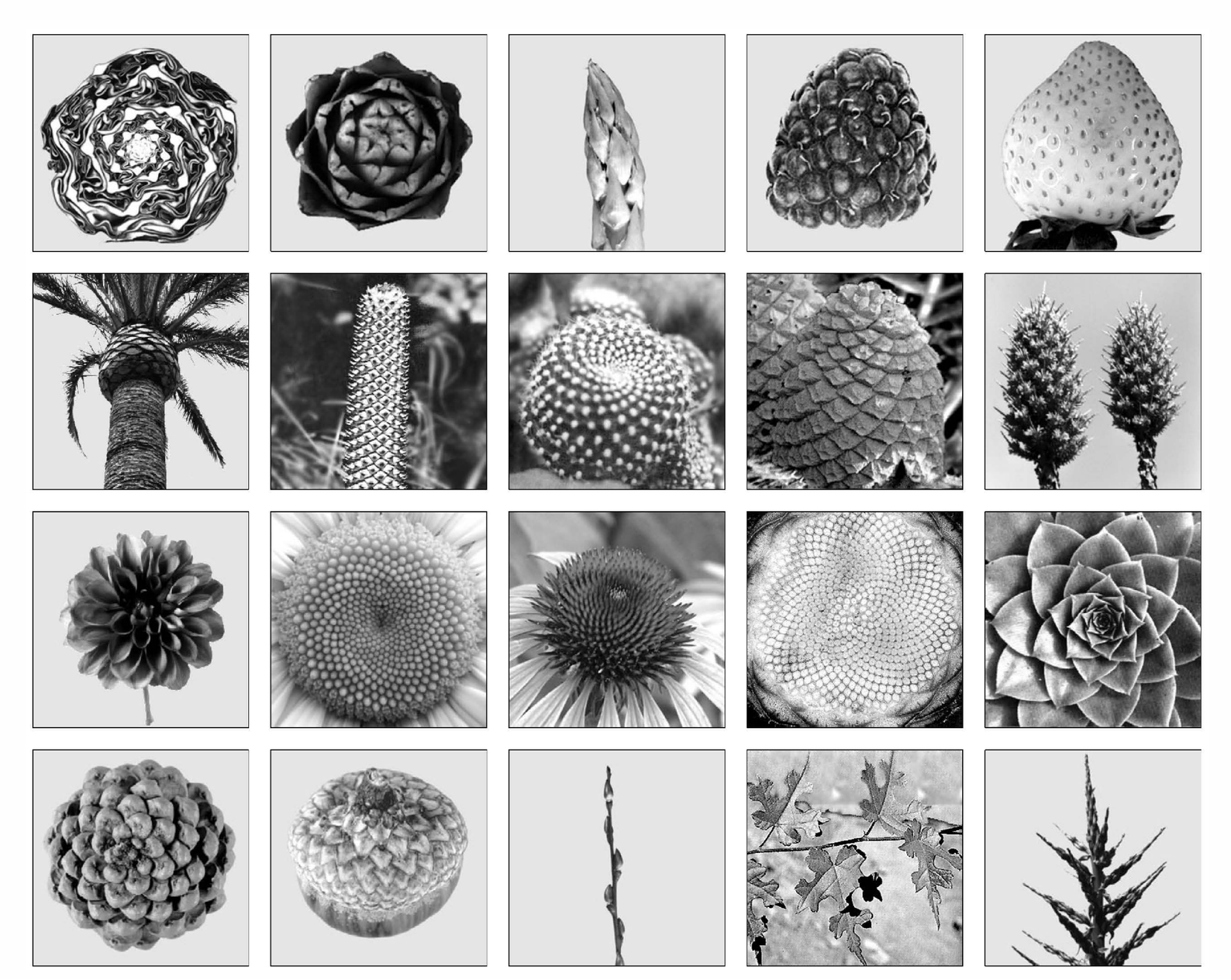The positions of new plant organs or other elements around a stem are presumably determined by what happens in a small ring of material near the tip of the growing stem. And what I suspect is that a new element will typically form at a particular position around the ring if at that position the concentration of some chemical has reached a certain critical level.
But as soon as an element is formed, one can expect that it will deplete the concentration of the chemical in its local neighborhood, and thus inhibit further elements from forming nearby. Nevertheless, general processes in the growing stem will presumably make the concentration steadily rise throughout the ring of active material, and eventually this concentration will again get high enough at some position that it will cause another element to be formed.

Examples of spiral arrangements of elements in various plant systems. The details of the final geometry are different in different cases. But in all cases it turns out that the original angle between successive elements is almost exactly 137.5°. The first row shows red cabbage (cut open), artichoke, asparagus, raspberry and strawberry. The first two objects on the last row are a pinecone and an acorn.



